The Chamber of Wood
When describing the different chambers that existed within the courtyard of the Beis HaMikdash, our Sages1 mention “the Chamber of Wood.” This refers to the chamber of the High Priest in which he lived for the week during which he prepared himself for the Yom Kippur service each year.
This name is problematic, for it implies that the chamber was built from wood2 and the Rambam states:3 “One may not build within [the Sanctuary or the courtyard] using any wood which projects at all.4 One may use only stone, or brick and mortar.”
It is, however, possible to explain that the construction of the High Priest’s chamber did not violate this prohibition. For from the Rambam’s wording, it appears that the prohibition is against only wood that “projects.”5 There is no difficulty with building a structure of wood if it does not project. We may assume that this is the manner in which the High Priest’s chamber was built; although its infrastructure was wood, the wood did not project.6
A source for the Rambam’s conception of this prohibition can be found in the description7 of King Shlomo’s construction of the First Beis HaMikdash: “And he built the inner court with three rows of hewn stone, and one row of cedar beams.” Commenting on that passage, our Sages8 explain that Shlomo sunk the wood in the building and plastered over it.9
In this context, it must be noted that other authorities [Maaseh Rokeach, Har HaMoriah, and the Radbaz (loc. cit.)] maintain that although wood may not project outward from the building of the Beis HaMikdash, there is no difficulty in the wood being openly visible.
The Change in the Name of the Chamber
In many sources,10 the High Priest’s chamber is referred to by the name the “Chamber of the Parhedrin.” Parhedrin is a Greek term meaning “officers of the king.” This name was given to this chamber in the latter portion of the era of the Second Beis HaMikdash, because at that time the High Priesthood was sold by the ruling powers and purchased by unworthy men. After entering the Holy of Holies on Yom Kippur, they would die within the year. Thus the position changed hands frequently, like the “officers of the king” who were replaced every twelve months.11
My father and teacher12 explains that the name “The Chamber of Wood” was used to refer to the chamber during the era of the righteous High Priests, because the Hebrew for wood, עץ also means “tree.” Trees are as a symbol of long life, as inferred from the verse,13 “As the days of a tree will be the days of My people.” The name “chamber of wood” reflects the righteousness of the High Priests who used the chamber and lived for extended periods.14 The name “chamber of Parhedrin,” by contrast, reflects the unworthy nature of the High Priests who died within a year.
The Ultimate Experience
The name “the Chamber of the Parhedrin” raises a question: The High Priests who purchased this position in the era of the Second Beis HaMikdash were aware of their own spiritual level and they were conscious — from the actual experience of their predecessor in office — of the fact that an unworthy High Priest would not live longer than a year. Why then did they desire this office and, indeed, sacrifice large sums of money to obtain it?
The answer is that even these individuals, however unworthy, appreciated the unique connection established with G‑d when the High Priest entered the Holy of Holies on Yom Kippur. And to experience this connection, they were willing to sacrifice everything — their fortunes and even their lives.
There is another positive dimension of the name “the Chamber of the Parhedrin.” This reference to changing officials is an allusion to the service of teshuvah, which the High Priest must personally undergo and also inspire the people to. Through teshuvah — sincere repentance and return to G‑d — a person can change his identity and become a new person, changing his previous identity. This is the core of the service of the High Priest on Yom Kippur.
* * *
May we merit a renewal of the High Priest’s service in the Beis HaMikdash and may this take place in the immediate future.
Adapted from Likkutei Sichos, Vol. XXVIII, Parshas Masei






Start a Discussion